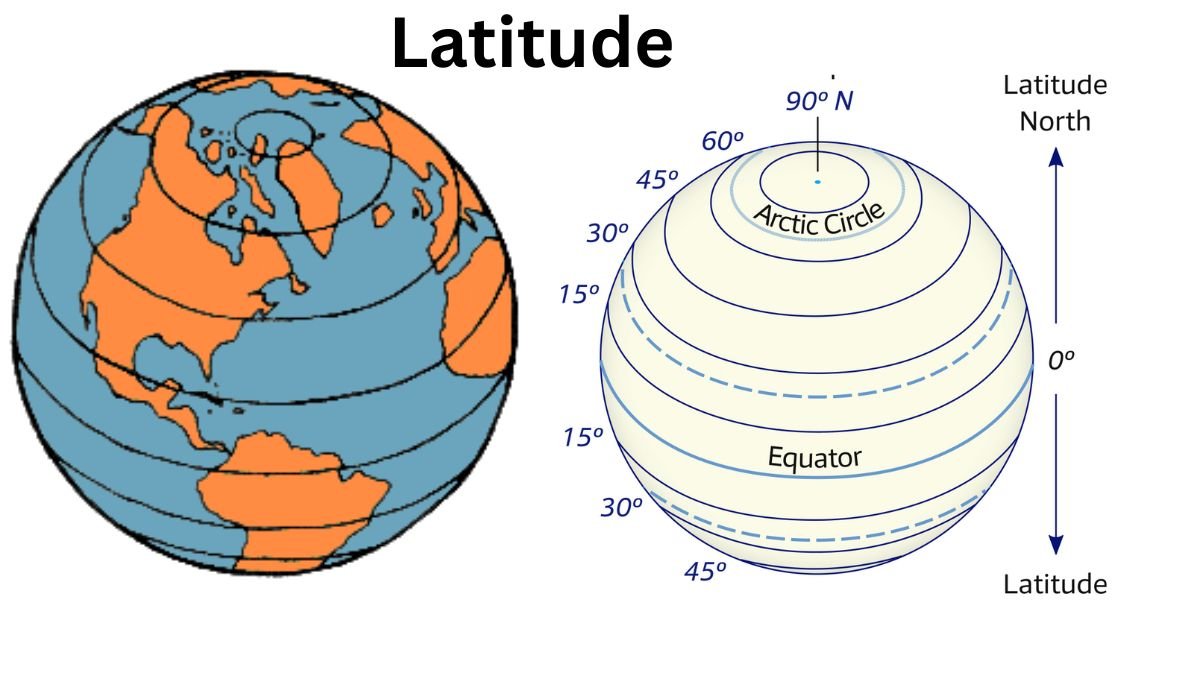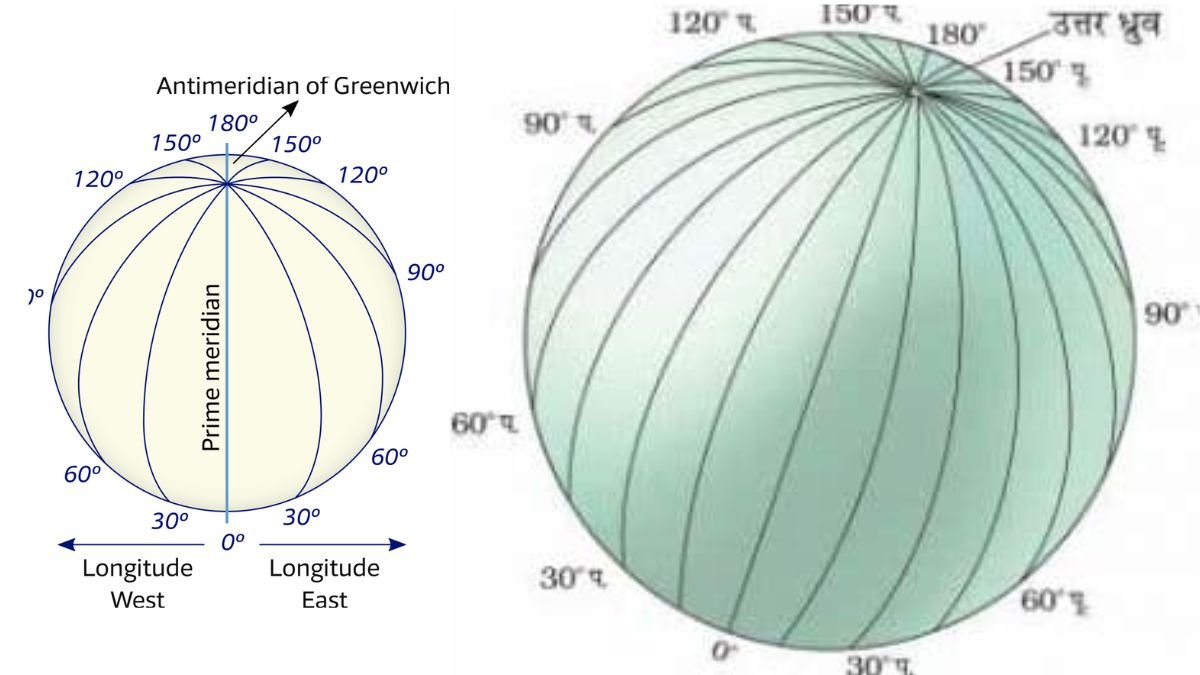Latitude:
The angular distance measured from the center of the earth of any point on the earth’s surface on the equator or on a meridian north or south of the equator is called latitude. It is shown in degrees, minutes and seconds. The equator is the latitude of “. It divides the earth into two equal parts. From the equator to the parallel pole, many circles are formed in both hemispheres.

These ‘circles’ are called ‘latitude lines’. It is found from 0° to 90° in the northern and southern hemispheres. Thus there are 181 latitude lines. 23½°N Tropic of Cancer and 662°N Sub Aretic in the Northern Hemisphere and 23½°S Tropic of Capricorn and 662°S Sub-Antarctic in the Southern Hemisphere are called The latitudinal distance of every 1° is about 111 km, which varies from the equator to the pole due to the sphericity of the earth.
Longitude: The angular distance of a place that is east or west of the prime meridian is called longitude.
The prime meridian is considered to be 0° longitude. It passes through Greenwich in London. There are these longitude lines up to 180° on either side, which is 360° in total. Where only the 0° latitude line divides the earth into two equal parts, all the longitude lines do this work. That’s why all of them are called the Great Circle. , The distance at the equator of longitude is 111.32 km. which decreases towards the poles.

All longitudes located to the east of the Greenwich line up to 180° are called ‘Eastern longitude’ and all longitudes located to the west are called ‘Western longitude’. These are called the Eastern Hemisphere and the Western Hemisphere respectively. Due to being spherical, the Earth rotates 360° in 24 hours, so it takes 4 minutes for the Earth to cover a distance of 1° longitude.
Since the sun rises in the east and the earth is rotating on its axis from west to east. Therefore, the time of the East is ahead and the time of the West is behind. For this reason, the difference in time is seen in all the places on the earth. There is a difference of one hour for every 15° of longitude. Thus going from 0° to 180° East takes 12 hours and is 12 hours ahead of Greenwich time. Similarly, moving from 0° to 180° west gives a time lag of 12 hours from Greenwich time. This is the reason why there is a total difference of 24 hours i.e. one day-night between 180° east and west longitude.
International Date Line:
The imaginary line determined on the earth leaving the land blocks almost along the 180° meridian is called the ‘International Date Line’. To save Siberia from being divided and to keep Siberia separate from Alaska, it is turned east at 75° north latitude. In the Bering Sea, this line is diverted towards the west. To hold together the Fiji Islands and various parts of New Zealand, this line is diverted to the east in the South Pacific Ocean. There is a difference of one day in the east and west of the International Date Line.
Hence one day is increased or decreased while crossing it. When a ship crosses the International Date Line and travels west, a day is added. And when traveling in the east direction, one day is subtracted. Local Time It is the time calculated from the position of the Sun at a particular place on the Earth. The local meridian time is the time when the sun shines vertically at that particular place. There is a difference of about two hours in the local time of the places located in the east (Arunachal Pradesh) and most west (Dwarka in Gujarat) of India.
Standard Time: It is the mean of the meridian passing through the middle of a country, which is considered applicable to the whole country due to the inconvenience of local time. For example, the time at 82% * E meridian which passes through Naini near Allahabad is the Standard Time (IST) for the whole of India. This avoids the problem of adjusting the time difference due to the longitudinal difference in different regions of India.
Some important facts helpful in calculating local time
10 ° longitude (Greenwich Line) has western longitude on the left and eastern longitude on the right, while 1800 longitude (International Date Line) has eastern longitude on the left and western longitude on the right.
When going to the left from any longitude, the time decreases by 4 minutes for every 1° of longitude, while it increases by 4 minutes to the right. To the left of 180 longitude (International Date Line) 3.
one day has to be added on the left, while on the right
One day has to be subtracted. If the direction of rotation of the earth is reversed, then all the above three processes will reverse.
Will work from After taking out the local time for traveling by ship or plane, the travel time is added or subtracted as per the requirement. To find ‘when will reach’, travel time is added to local time while to find ‘when did leave’, travel time is subtracted after subtracting local time.
Also Read
- Demystifying Latitude and Longitude: Exploring their Significance and Applications
- What is the difference between global warming and climate change?
- Exploring Physical Geography: Understanding the Earth’s Natural Processes and Their Impacts
- 10 Remarkable Women Scientists Who Deserve Greater Recognition
- Earth Day: History, Significance, Usefulness, Theme 2023 & Quotes